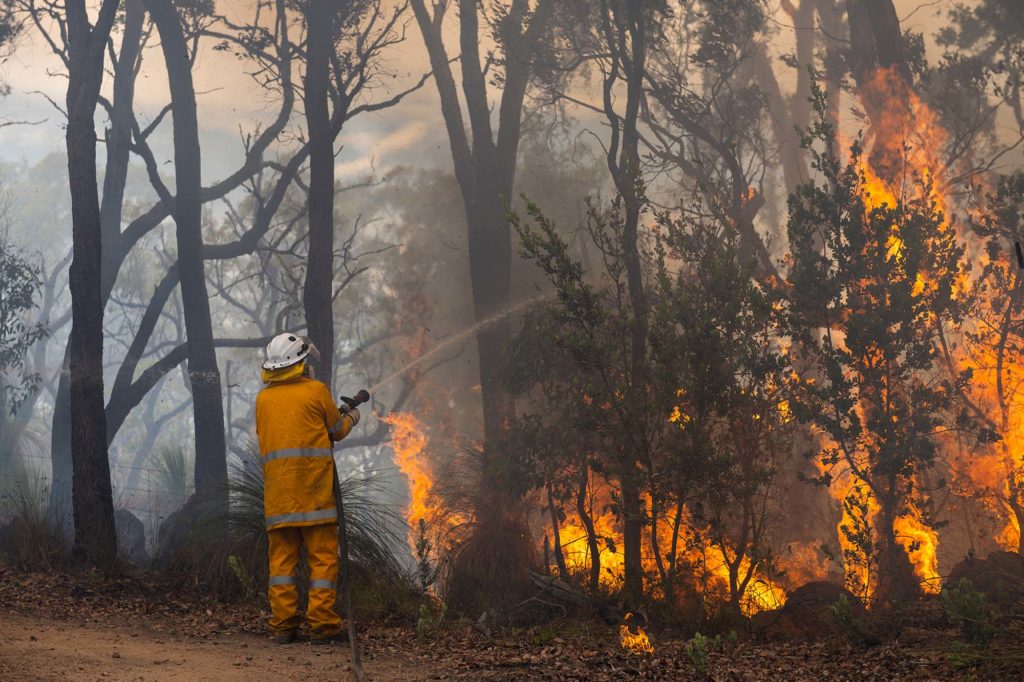What do I need to know about
new WHS reporting obligations?
WA’s new Work Health and Safety Act 2020 (WHS Act) and regulations will commence on 31 March 2022.

Partner, Mills Oakley
Mark Civitella is a partner of national law firm Mills Oakley and leads the firm’s Perth insurance practice. Mark has over two decades of experience as an insurance litigator. He is a preferred advisor to several Australian and global insurance companies and a number of self-insured companies and groups. Workers’ compensation claims are a significant part of Mark’s practice and in the past five years he has presented to many employers and industry groups in WA on the prevention and handling of claims. Mark is endorsed by several respected industry directories, including ‘Doyle’s Guide’ and ‘Best Lawyers in Australia’.
There is no doubt that COVID-19 and its symptoms would meet the definition of disease in the Act, which is very broad:
disease includes any physical or mental ailment, disorder, defect, or morbid condition whether of sudden or gradual development.
The critical question is whether the disease (or the effects of the disease) fall within any of the definitions of injury in s.5(1) of the Act:
Injury means —
(a) a personal injury by accident arising out of or in the course of the employment, or whilst the worker is acting under the employer’s instructions; or
(b) a disease because of which an injury occurs under section 32 or 33; or
(c) a disease contracted by a worker in the course of his employment at or away from his place of employment and to which the employment was a contributing factor and contributed to a significant degree; or
(d) the recurrence, aggravation, or acceleration of any pre-existing disease where the employment was a contributing factor to that recurrence, aggravation, or acceleration and contributed to a significant degree; or
(e) a loss of function that occurs in the circumstances mentioned in section 49,
but does not include a disease caused by stress if the stress wholly or predominantly arises from a matter mentioned in subsection (4) unless the matter is mentioned in paragraph (a) or (b) of that subsection and is unreasonable and harsh on the part of the employer
WA’s new Work Health and Safety Act 2020 (WHS Act) and regulations will commence on 31 March 2022.
There is no hard and fast rule regarding whether contraction of the COVID-19 virus is compensable under the Workers’ Compensation & Injury Management Act 1981 (the Act) – it will need to be determined on the facts of each case.
The past two years have been tumultuous, with unplanned changes to restrictions, safety measures, and border closures adding to the stress and uncertainty of the COVID-19 pandemic.
Existing case law strongly suggests that a worker’s infection with the disease will be found to have occurred in the course of the employment if there is evidence:
In Sara v G&S Sara Pty Ltd [2021] NSWPIC 286, the Personal Injury Commission of New South Wales determined the widow of a worker who died from COVID-19 while on a business trip to the USA was entitled to a death benefit of $834,000 plus other expenses.
The Commission determined under NSW legislation that COVID-19 satisfied the definition of disease. The critical issue was whether the deceased was infected in the course of the employment. The Commission applied Hatzimanolis v ANI Corporation Ltd and Comcare v PVYW to conclude that while it was possible for the deceased to have been infected while engaged in activities which were not work related, the period of travel to the USA was clearly within the course of his employment as he was directly encouraged and induced by his employer to travel there for business. Further, the Commission found based on the available evidence – including the expert opinion of an Infectious Diseases Specialist as to the disease’s normal incubation period – that on the balance of probabilities the deceased became infected while travelling to the United States.
The requirement that the employment contributes to the contraction of the disease be significant is not a high threshold to meet. In Mokta v Metro Meat International Ltd [2005] WASCA 143 Pullin J held that “significant”, for the purposes of the Act, means “not insignificant”. This means that the employment need not be the only contributing factor but must be material in its contribution.
It is likely that when community transmission becomes more prevalent in WA, it will become more problematic for some workers to demonstrate their employment was a significant contributing factor to the contraction of COVID-19. This is because it will become increasingly difficult to establish that contracting COVID-19 was associated with the course of employment, and not just the inevitable result of ordinary day to day public interaction within the community. Valid claims for compensation under the Act will have stronger prospects where individuals can demonstrate prolonged periods of effective isolation before being required to be exposed to the virus because of their employment.
In more seriously infected patients, definition (a) of injury may also be applicable. The COVID-19 virus can cause profound respiratory failure and other identifiable pathological changes including strokes and heart attacks which would constitute an internal ‘personal injury by accident’. Based on definition (a) of injury, the relevant test for the entitlement to compensation in that situation becomes ‘arising out of or in the course of the employment’. The same principles will apply to the ‘course of employment’ under this definition as for type (c) injuries.
Each month we take your questions to one of our LGIS team members to answer.
If you want to submit a question for next issue, email us at [email protected]

The City of Fremantle’s new agile workplace sets the standard on putting employee
wellbeing – and ergonomics – first.

The recent Intergovernmental Panel on Climate Change (IPCC) report stresses the time to act on climate change is now, and there is much work to be done – including by local governments.

Local governments are often planning exciting new places for their communities to gather and play.
LGIS is the unifying name for the dedicated suite of risk financing and management services for WA local governments, established by the WA Local Government Association in conjunction with JLT Public Sector (part of the Marsh group of companies). LGIS is managed by JLT Public Sector (ABN 69 009 098 864 AFS Licence 226827).
Risk Matters, via this website, is designed to keep members, their staff and elected members informed on topical risk management and insurance issues and LGIS programs and services.